News
Fort Fetterman, From Fort to City to “Drybone”

Looking towards the park headquarters and the officer’s quarters
In February of 1961, the Wyoming Legislature purchased the grounds where Fort Fetterman once stood. In 1962, The Wyoming Historical Commission gained ownership of the site and began to preserve it. The buildings had deteriorated, and the land had been used for pasture.
Although Fort Fetterman is about 10 miles from Douglas, much of its history is intertwined with Sheridan County’s early history. The Fort, established in 1867 on a bluff above the North Platte River, was even named for Col. Fetterman, who was a commander at Fort Phil Kearny in 1866, and lost his life at the Fetterman Fight near Story, Wyo.
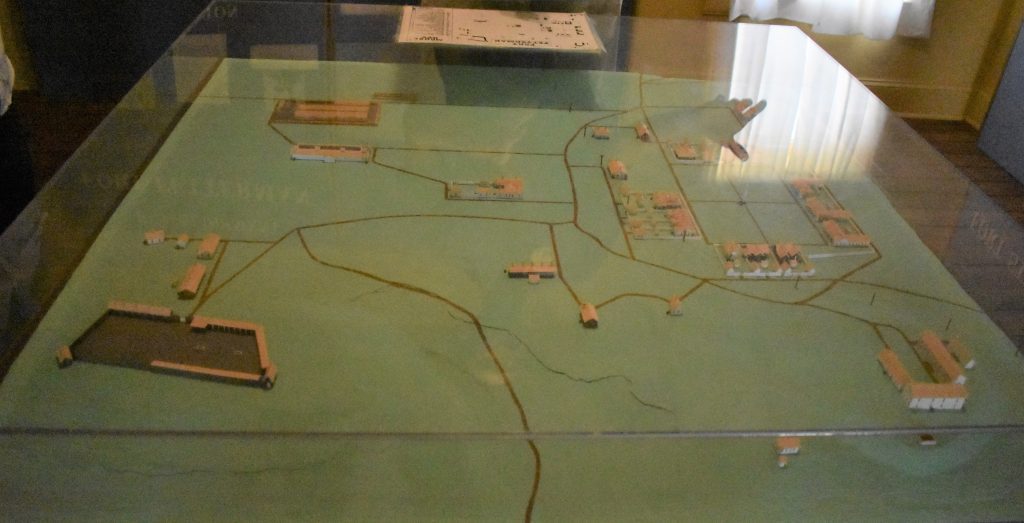
Major William McEnery Dye and four infantry companies began the construction of Fort Fetterman in July 1867. Brigadier General H. W. Wessells was the first commanding officer in November of that year. In 1868 the first dwellings were replaced with structures of adobe, wood and stone.
Fort Fetterman was one of four forts established between 1865 and 1867 to guard the Bozeman Trail from the native tribes, who considered the land theirs. Fetterman was the last established fort along the trail, but it lasted nearly 20 years, until 1882.
Many miners and settlers wanted access to the open lands north of the Platte River, and they wanted the army’s protection from the hostile tribes.
In the Cheyenne Daily News, June 19, 1875: Big Horn Expedition. General Order No.4. All parties in Wyoming and Northern Colorado who are interested in opening the Black Hills and Big Horn country for occupation and mining purposes, and who contemplate joining the expedition under my command, or who are at present members thereof are hereby requested and directed to attend a grand rally and mass meeting, to be held at Ecoffcey And Cunys “Three-Mile Ranche,” near Ft. Laramie, on the 1st day of July, for the purpose of taking into consideration the subject so important to us and all the people of the Far West, and of fixing upon some plan to be adhered to in the future in reference there to. 0. C. Carpenter Colonel Commanding Big Horn Expedition.
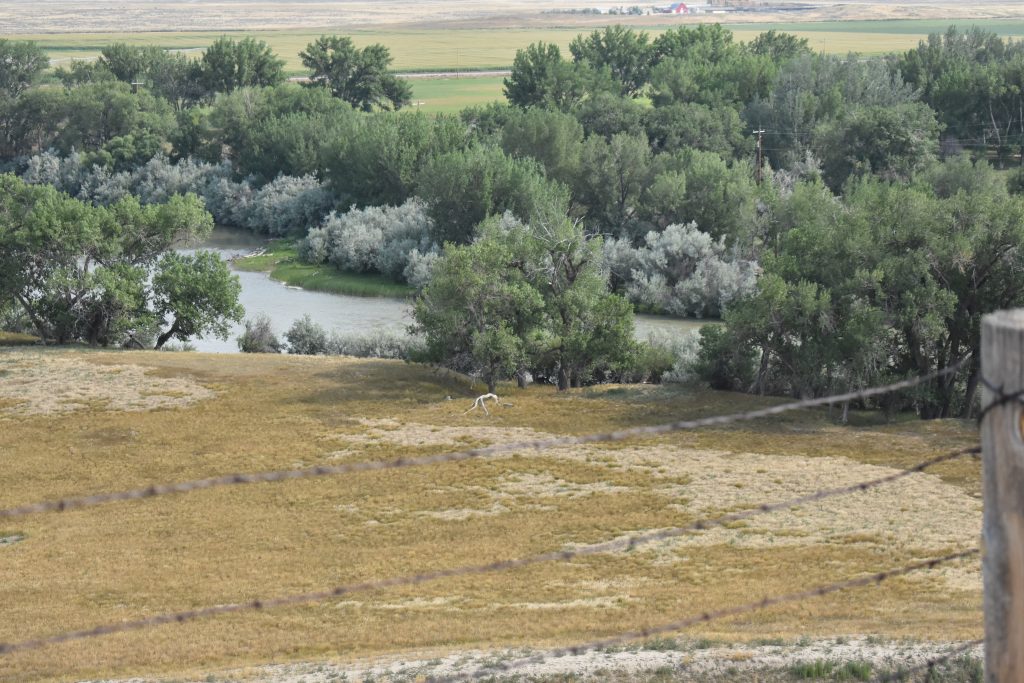
In 1876, near the end of the Indian wars, Gen. George Crook led three marches from Fort Fetterman, including the one when he engaged the Sioux at the Battle of the Rosebud in southern Montana.
Cheyenne Weekly Leader, June 3, 1876, reports on the march: Latest From The North. Crook on the March. Gen. Crook’s expedition left Fort Fetterman yesterday morning, and camped on Sage Creek, fifteen miles out, Gen. Crock following in the evening. Col. Royal commands the cavalry and Col. Chambers the infantry. All the supplies are now across the Platte. The Indians are in considerable numbers in the neighborhood of Fort Fetterman, though keeping quiet. A man named Murphy came on to the fort yesterday from the Hills. He says the Indians are very troublesome in that vicinity. He reports having assisted in the burial of a number of persons killed by them; his companion was among the number.
Capt. Egan returned to Fort Laramie yesterday, after scouting the country from Laramie to Custer over the traveled road, and returning via the agency route. On Sage Creek he overhauled a band of six hundred Indians in the midst of an attack on Charles Hecht’s ox train which was en route for the Hills. He succeeded in driving them off, they taking a northerly direction, and the Captain says, intent on joining Sitting Bull. Egan says fully one thousand young warriors have left the two agencies.
A number of miners returned with Egan, among whom was Mr. M. V. Boughton, ex-mayor of this city, who reported the northern mines paying well, and about three thousand miners in that section.
He also confirms the news of the safety of J. C. Sanders. Captain Nickerson, aide de camp for Gen. Crook, telegraphed yesterday from Fort Fetterman that all the young warriors have left Red Cloud and are going north to join Sitting Bull, leaving their families to be protected at the agencies.
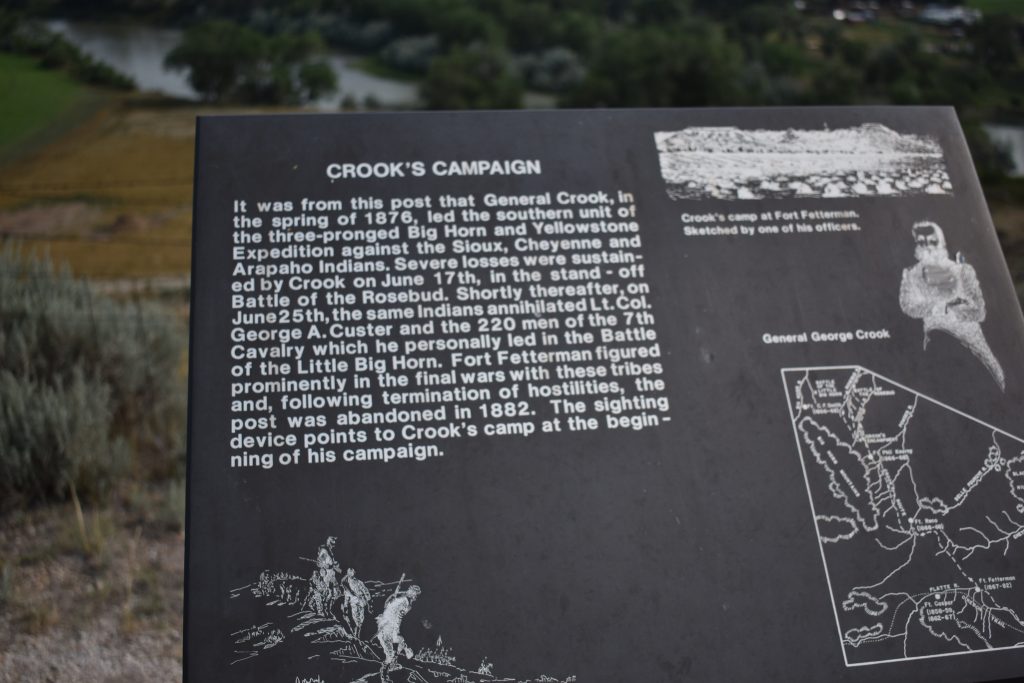
The Wyoming Weekly Leader, Volume 09, Number 27, April 1, 1876: Marching on the Indians. The Big Horn expedition, which is intended to free the whole of Wyoming and large portions of Montana and Dakota from the presence of the degrading red men who now infest the Big Horn, Powder River and other vast mineral and agricultural regions in that section of the country, is now thoroughly organized and pushing its way into the wildernesses of the northwest.
These Indian tribes, together with the Red Cloud and Spotted Tail agencies, are to be located in the vicinity of Forts Sully, St. Pierre, and Rice, on the Missouri, much nearer to supply points than they are at present, with the advantage of almost direct rail and water communications, thus reducing the expense of maintaining military posts and agencies at least one-third. The present expedition is under the command of Col.. J. J. Reynolds, and is accompanied by Gen. Crook. It consists of five battalions of cavalry, of two companies each, and one battalion of infantry, also composed of two companies. Besides these an excellent corps of twenty-five or thirty scouts, all of whom are thoroughly familiar with Indian campaigns and capable of acting as guides, is under command of Capt. T. H. Stanton.
Over 1,500 head of stock is required in the various departments, of which 650 are cavalry horses, 480 mules for the wagon train, and 400 pack mules. The expedition left Fort Fetterman, Wyoming, in the early part of the present month, and is at present traversing a region wonderful not only in its natural scenery, but in the wealth of the country in mineral and agricultural area. The Indians known to be scattered over its vast extent are said to number from 18,000 to 20,000, of whom at least 4,000 may be considered warriors. Indian runners have already convoyed the intelligence of the military movements to the northern tribes, so that Gen. Crook cannot surprise the Indians, as he had expected to.

Cheyenne Weekly Leader, July 22, 1876, reports about Crook’s march to the Rosebud ….On the morning of the second day after leaving the supply camp on Goose Creek, Crook’s command halted to rest in the valley of the Rosebud. It was then only in the foot hills of the mountains. Had the Crow scouts performed their duty on the previous night they would have been passed in darkness, for had Gen. Crook known of the proximity of the Sioux village, the Richmond of his hopes, he would have ordered a forced march in order to effect a surprise. The result of the battle of the Rosebud, which has been falsely termed a defeat, would thus have been a far different one. While it might have ended in the massacre of Crook and his gallant command—for the Indians outnumbered him ten to one, the probabilities are that he would have achieved a signal victory over the surprised Sioux.
While most of the Bozeman Trail forts, including Reno, Phil Kearny and C.F. Smith, were abandoned under the terms of the 1868 Fort Laramie Treaty, Fort Fetterman remained and became the prime military establishment and strategic supply base in the heart of Indian country.
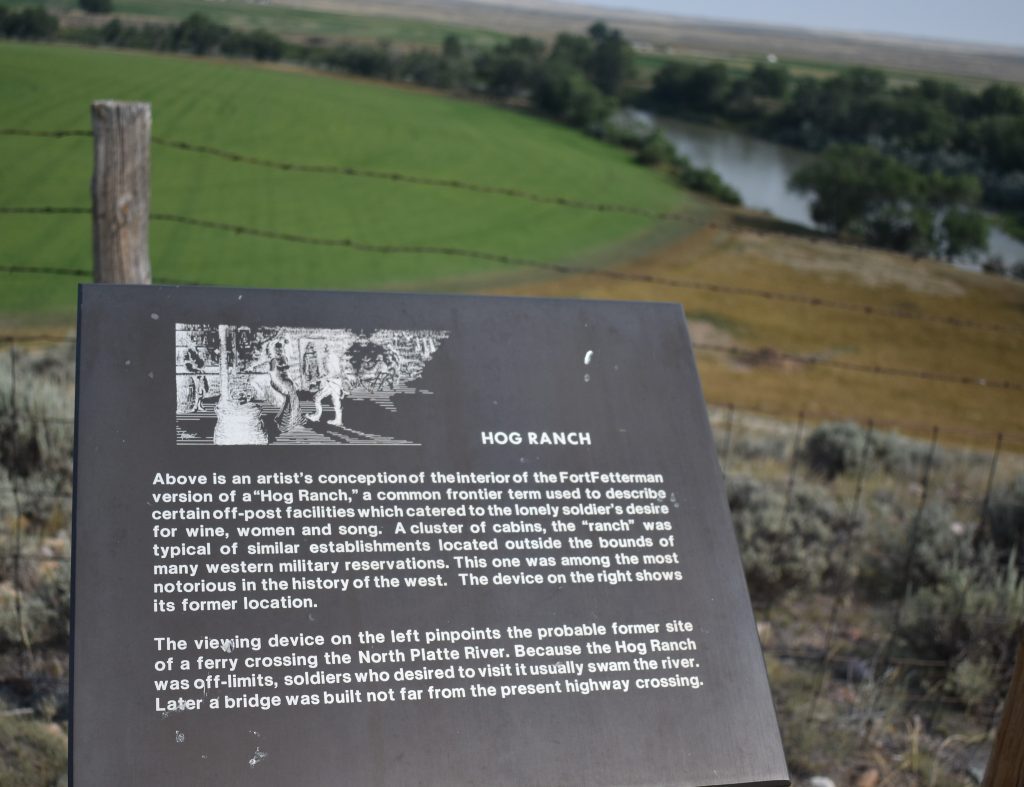
Fort Fetterman continued as a fort until 1882. When it was decommissioned, a small community known as Fetterman City sprung up and was used as an outfitting point for area ranchers and wagon trains. It was notorious for its saloons and brothels, (hog ranches) that served the cowboys whiskey and entertainment during the 1880s cattle boom.
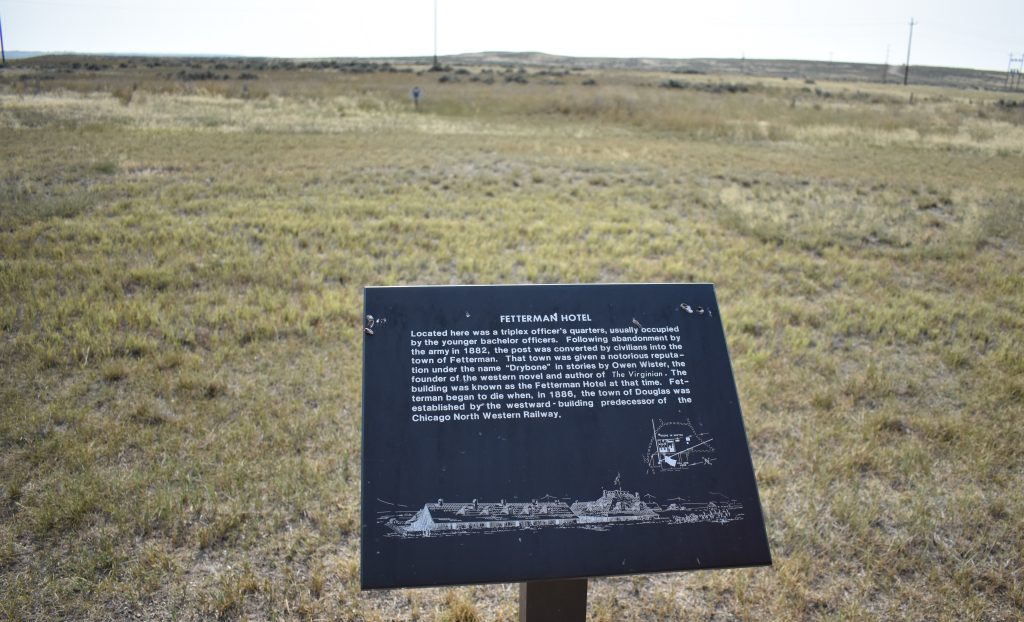
When the railroad advanced to Douglas, the settlement of Fetterman City was abandoned. However, Fetterman City wasn’t quite dead. In 1897, in the novel, Lin Mclean, Owen Wister used Fetterman City as the model for his city, “Drybone.”

The site was added to the National Registry of Historic Places in 1969 and it is a Wyoming State Historic Site. Today, there are several interpretive signs, and a Bozeman Trail marker. There is an ordnance warehouse that is still standing, and a restored officers’ quarters and museum exhibits give visitors a feel of what the fort used to be. It is open during the summer months and one can access the Fort Fetterman website for dates and hours.


Ira roadifer
March 19, 2022 at 10:21 pm
Thank you. Always enjoy Wyoming history.